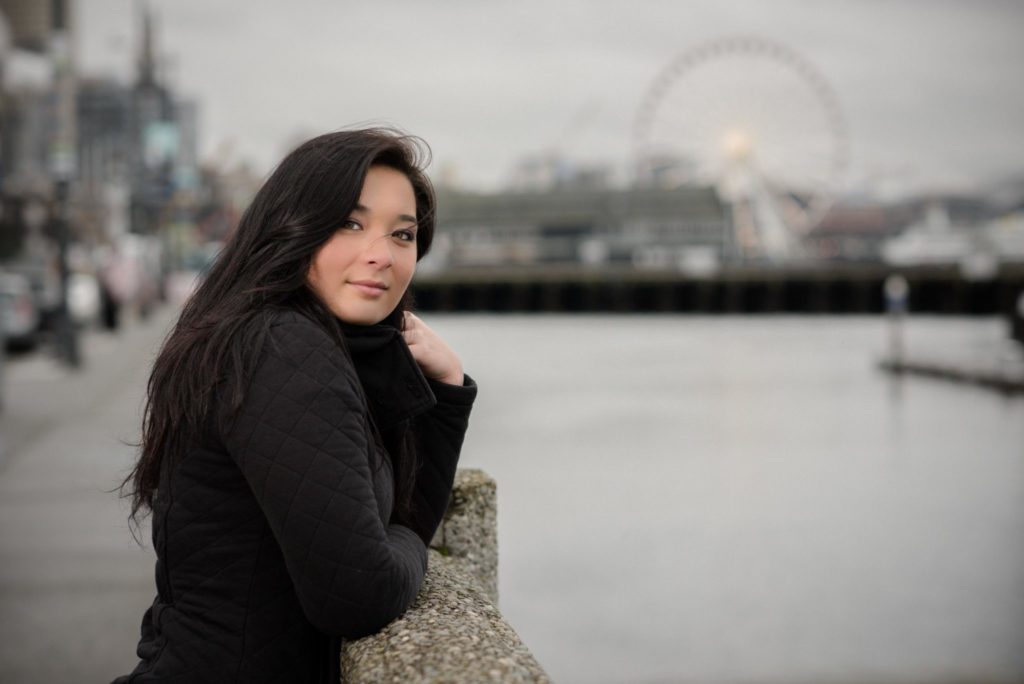Let me get started by explaining photography in the most basic terms. In order to make a photograph, light must come into contact with your camera’s sensor (or film, if you’re old school). That’s really all there is to it. Light enters the camera through the lens, and is focused on the sensor, where it projects an image from the outside world. This image that’s captured on the sensor is… wait for it… a photograph! Cool, huh?
Ok. So… “aperture” is the name of the opening in your lens. Back when pinhole cameras were all the rage, the aperture was a fixed size. Now that we use lenses, the size of the aperture can be changed in order to let more or less light through. The size of the opening is expressed by the F-number, or the F-stop.
So far so good?
At this point things can potentially get challenging, but stay with me because it’s always a little better when new information doesn’t feel completely arbitrary.
The F-number (aka F-stop) is based on a mathematical equation that expresses the size of the aperture (lens opening) in relation to the focal length of the lens (how big the lens is). If you’re a math-y person, feel free to google the equation that determines the F-number and learn all about the different variables and how square roots fit in, but that type of thing doesn’t interest me much and you don’t need to know it, so I won’t go into the details here. Since lenses come in all different sizes, knowing the relationship between the opening and the overall size of the lens is more helpful than knowing the actual diameter of the aperture.
But honestly, that’s all beside the point – you probably could have skipped that paragraph. Sorry. So here’s what you actually do need to know.
First of all, the F-stop you choose impacts how much light enters the camera, in the same way a wide or narrow hose impacts how much water gets through. That means, if you change the size of your aperture, you may have to make other adjustments to get the correct amount of light to hit your camera’s sensor. If you’re using an automatic setting, the camera will make the needed adjustments without any effort on your part – so don’t worry about it. You can worry later if you decide to learn how to work in Manual mode. Right now we’re just focused on what the hole in the lens can do.
The second thing you should know is that the size of the aperture affects the look & style of your photograph. By adjusting the aperture, you can change how much of your image is in focus. When the aperture is open wide, light comes in scattered from lots of different angles and bounces around inside the lens, creating a photograph with a lot of blur, and only a narrow band of focus around the subject. In contrast, when the aperture is small and narrow, most of the light enters the lens from a relatively narrow band, creating an image that is much more focused throughout. The degree to which an image is in focus is referred to as “depth of field.”
Now that you know this, what can you do with it? I recommend you set your camera to aperture-priority mode, and start playing. On Nikon cameras, this is called “A” mode and for Canon, it’s called “A(v)” mode. Once you’ve selected the aperture mode, you can look through your viewfinder and press your shutter button half-way down. This should light up a bunch of technical details about the exposure and settings for the photo you’re about to take. You’ll see numbers along the bottom of the viewfinder, and somewhere in there you’ll see the f-number, which might range from approximately 1.4 to about 22. Some cameras are extra nice and include a little “f” before the number. How thoughtful!
Once you’ve located the F-stop information in your viewfinder, you can turn one of the adjustment dials on your camera to change your F-stop setting. You will see the F-number change, and in response, some other numbers may change as well. A high F-number corresponds to a high amount of focus, and a low F-number corresponds to a low amount of focus. Take a picture at the lowest F-number, and then move up to the highest F-number and do it again. Check out the difference between the two, and decide what you like.
Adjusting the F-stop can be a great way to make a more impactful photograph. If you’re into portraits, a low F-number is popular for the soft dreamy look and the attention that’s brought to the subject. If you’re a landscape enthusiast, you may like your photos better when you use a high F-number because it allows you to see the details throughout the beautiful environment. Everyone has their own style and preference, so start experimenting and see what makes you happy.
That’s about all you need to know to get started with using your aperture-priority setting on your camera. So get out there and give it a go! Share your results and let me know what questions you have in the Catchlight Club on Facebook!
